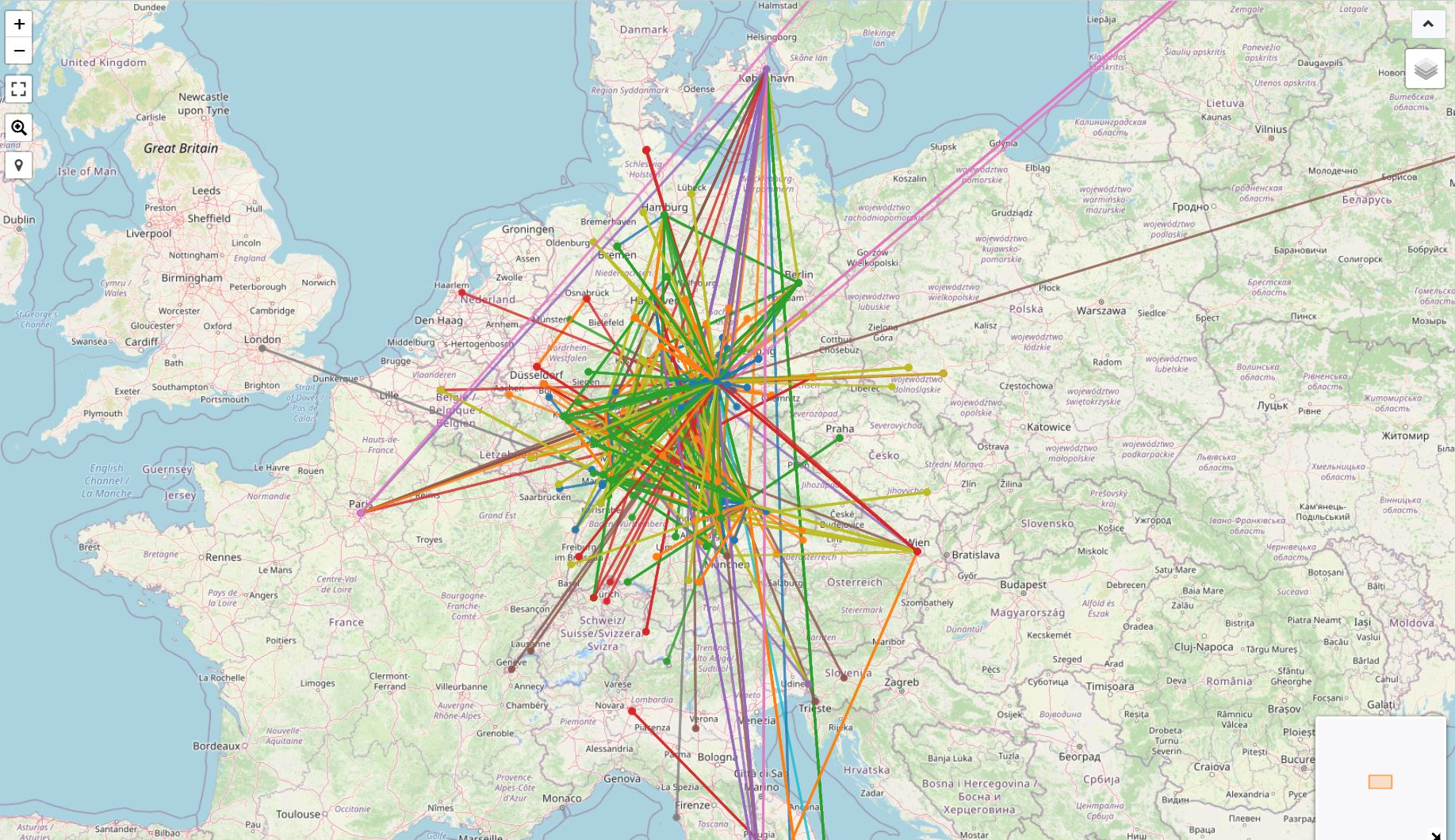FactGrid:Sample queries: Difference between revisions
Jump to navigation
Jump to search
Olaf Simons (talk | contribs) |
Olaf Simons (talk | contribs) |
||
| Line 67: | Line 67: | ||
* [https://database.factgrid.de/query/index.html#%23defaultView%3ABubbleChart%0ASELECT%20%3FMembershipLabel%20%28count%28distinct%28%3FA%29%29%20as%20%3Fcount%29%20WHERE%20%7B%0A%20%20%0A%20%20SELECT%20%3FA%20%3FALabel%20%3FADescription%20%3Ffamily_nameLabel%20%3FEntry%20%3FBnF_ID%20%3FDate_of_birth%20%3FMembership%20%3FMembershipLabel%20WHERE%20%7B%0A%20%20%20%20SERVICE%20wikibase%3Alabel%20%7B%20bd%3AserviceParam%20wikibase%3Alanguage%20%22en%22.%20%7D%0A%20%20%20%20%3FA%20wdt%3AP91%20wd%3AQ10677.%0A%20%20%20%20OPTIONAL%20%7B%20%3FA%20%28p%3AP91%2Fpq%3AP49%29%20%3FEntry.%20%7D%0A%20%20%20%20OPTIONAL%20%7B%20%3FA%20wdt%3AP247%20%3Ffamily_name.%20%7D%0A%20%20%20%20%3FA%20wdt%3AP91%20%3FMembership.%20%0A%20%20%20%20minus%20%7B%0A%20%20%20%20%20%20values%20%3FMembership%20%7B%0A%20%20%20%20%20%20%20%20wd%3AQ10678%20%0A%20%20%20%20%20%20%20%20wd%3AQ10677%20%20%20%20%0A%20%20%20%20%20%20%20%20%20%20%20%20%20%20%20%20%20%20%20%20%20%20%20%20%20%7D%0A%20%20%20%20%7D%0A%7D%0A%20%20%0A%20%20%7D%20group%20by%20%3FMembershipLabel The Illuminati membership statements] The intricate thing is that this search excludes the two 100% bubbles of Illuminati and Freemasons that are of course given with every Illuminati membership. | * [https://database.factgrid.de/query/index.html#%23defaultView%3ABubbleChart%0ASELECT%20%3FMembershipLabel%20%28count%28distinct%28%3FA%29%29%20as%20%3Fcount%29%20WHERE%20%7B%0A%20%20%0A%20%20SELECT%20%3FA%20%3FALabel%20%3FADescription%20%3Ffamily_nameLabel%20%3FEntry%20%3FBnF_ID%20%3FDate_of_birth%20%3FMembership%20%3FMembershipLabel%20WHERE%20%7B%0A%20%20%20%20SERVICE%20wikibase%3Alabel%20%7B%20bd%3AserviceParam%20wikibase%3Alanguage%20%22en%22.%20%7D%0A%20%20%20%20%3FA%20wdt%3AP91%20wd%3AQ10677.%0A%20%20%20%20OPTIONAL%20%7B%20%3FA%20%28p%3AP91%2Fpq%3AP49%29%20%3FEntry.%20%7D%0A%20%20%20%20OPTIONAL%20%7B%20%3FA%20wdt%3AP247%20%3Ffamily_name.%20%7D%0A%20%20%20%20%3FA%20wdt%3AP91%20%3FMembership.%20%0A%20%20%20%20minus%20%7B%0A%20%20%20%20%20%20values%20%3FMembership%20%7B%0A%20%20%20%20%20%20%20%20wd%3AQ10678%20%0A%20%20%20%20%20%20%20%20wd%3AQ10677%20%20%20%20%0A%20%20%20%20%20%20%20%20%20%20%20%20%20%20%20%20%20%20%20%20%20%20%20%20%20%7D%0A%20%20%20%20%7D%0A%7D%0A%20%20%0A%20%20%7D%20group%20by%20%3FMembershipLabel The Illuminati membership statements] The intricate thing is that this search excludes the two 100% bubbles of Illuminati and Freemasons that are of course given with every Illuminati membership. | ||
* [https://tinyurl.com/yhzquxwf Age at death of all human beings listed on FactGrid, diagram] | * [https://tinyurl.com/yhzquxwf Age at death of all human beings listed on FactGrid, diagram]<ref>Adapted from [https://en.wikibooks.org/wiki/SPARQL/Expressions_and_Functions#TIMEZONE_and_TZ here].</ref> | ||
== Grammatically intricate searches == | == Grammatically intricate searches == | ||
Revision as of 13:56, 10 November 2021
Help:
- https://www.wikidata.org/wiki/Wikidata:SPARQL_query_service/Wikidata_Query_Help/Result_Views/en
- https://en.wikibooks.org/wiki/SPARQL/FILTER
Looking for people
- Search all people of the same family name, sort by given names, state everyone with information about life dates and family details. Table
- Name of people who ever were a residents of place with basic personal information. Table
- Two Persons, when and where did they meet timeline
- All people with a FactGrid account by gender
Looking for documents
- All documents written by N.N. with corresponding documents. Table
- All documents sent to N.N. with corresponding documents. Table
- All documents mentioning N.N. with corresponding documents. Table
- All documents of a file listed in sequence. Table
- All documents sent from (place) by date. Table
- All documents of a specific archive and research interest by date. Table
Maps
Dots
All documents of a specific research interest where from? Map
All persons of a certain profession in a town Map
Lines
Tables
- Was a member of the Illuminati
- All guided compositions, where written? when? plus links to FactGrid transcripts.
- no functional query yet, but a first attempt is here, modeled after the "academic tree" graph in Scholia's author aspect
- all 18th-century addresses in Gotha (which have already received geo-coordinates)
- when was the Gregorian calendar introduced?
Graphs
Timelines
Statistics
- The distribution of males and females who became followers of the early 18th-century "French Prophets"
- Adherents of the French Prophets and their religious affiliation
- The Illuminati membership statements The intricate thing is that this search excludes the two 100% bubbles of Illuminati and Freemasons that are of course given with every Illuminati membership.
Grammatically intricate searches
- all places - with their respective Wikidata numbers
- Member of the Illuminati, state the primary document reference that we have for this statement
- The graduates of Gotha's Gymnasium Illustre/Ernestinum: their fathers with career information, their mothers and the fathers of the mothers (i.e. maternal grandfathers) with the respective career information] The search is intricate as it goes into related database objects and brings information located there into the table.
Looking for a statement - give it with all the qualifying statements
This search is especially useful if the data model needs to be changed. It searches the database for a particular statement and gives all the instances with the respective qualifying sub-statements:
SELECT * WHERE {
?s wdt:P2 wd:Q7.
?s p:P266 ?st. # ?s is the the statement node
?st ps:P266 ?o. # that simulates the predicate
?st ?qualifier ?value. # this is an attribute (a qualifier)
}
Filters
- all FactGrid people born between 1700 and 1710 A Filter that selects a time frame
- All members of the strict Observance in Frankfurt's Prefecture A Filter that selects an Item in a qualifying statement
Wishful thinking
- A map of all places a Person has been, using (also) the information from sender's and receiver's places
- visualisations quest on phabricator



